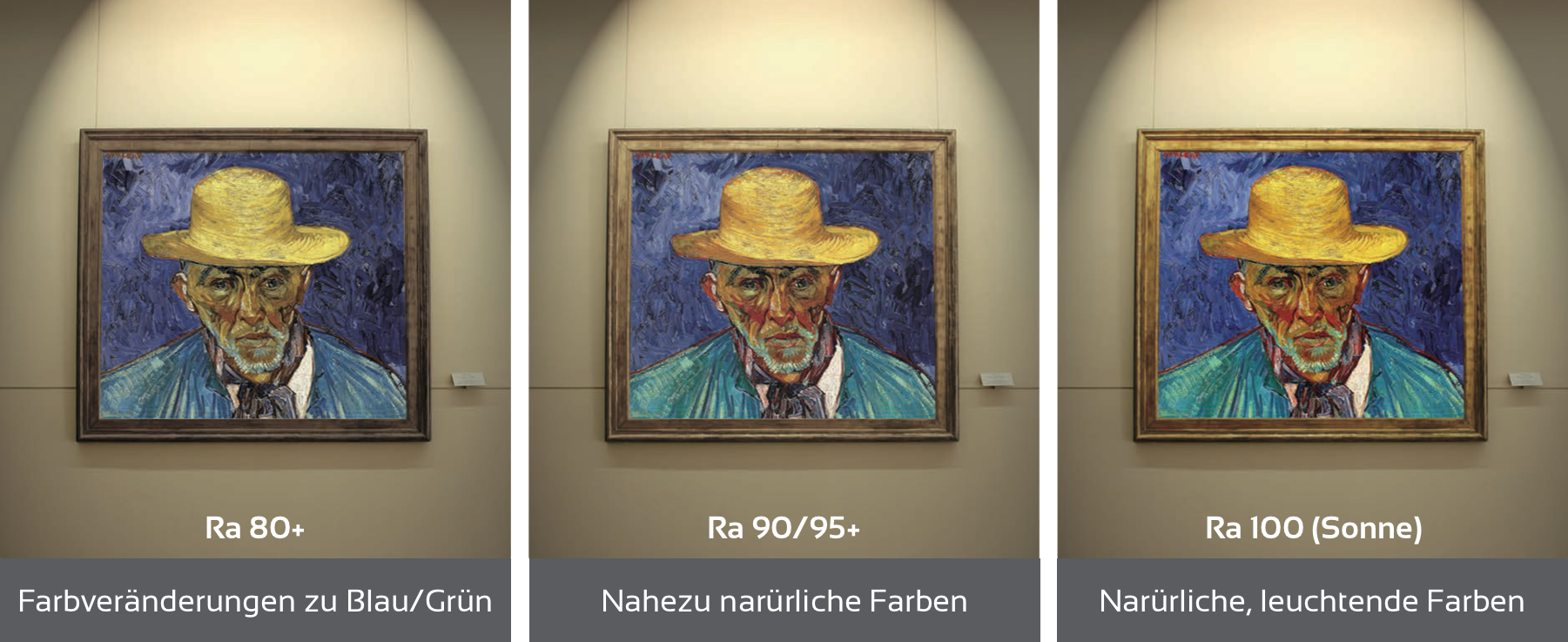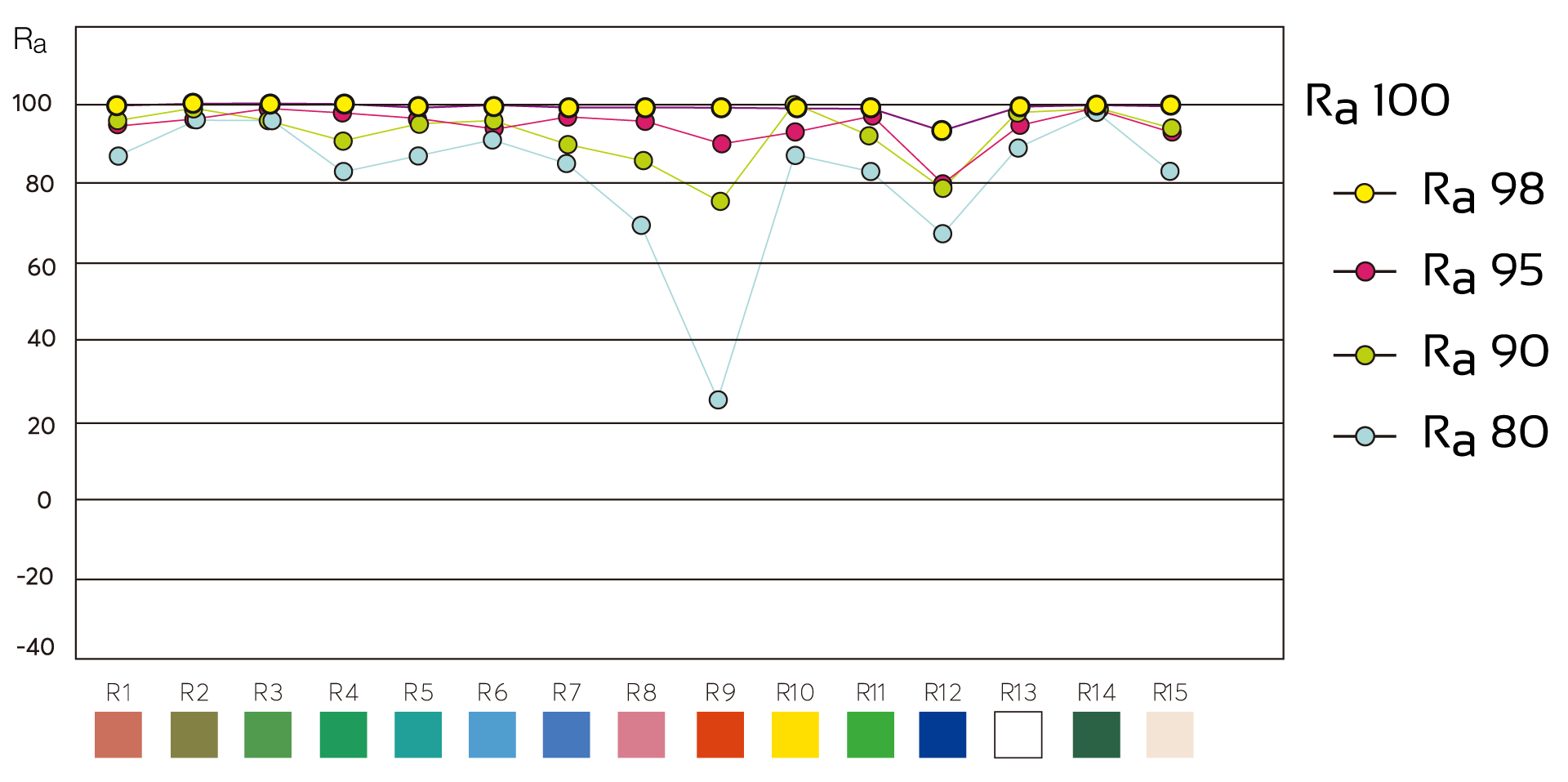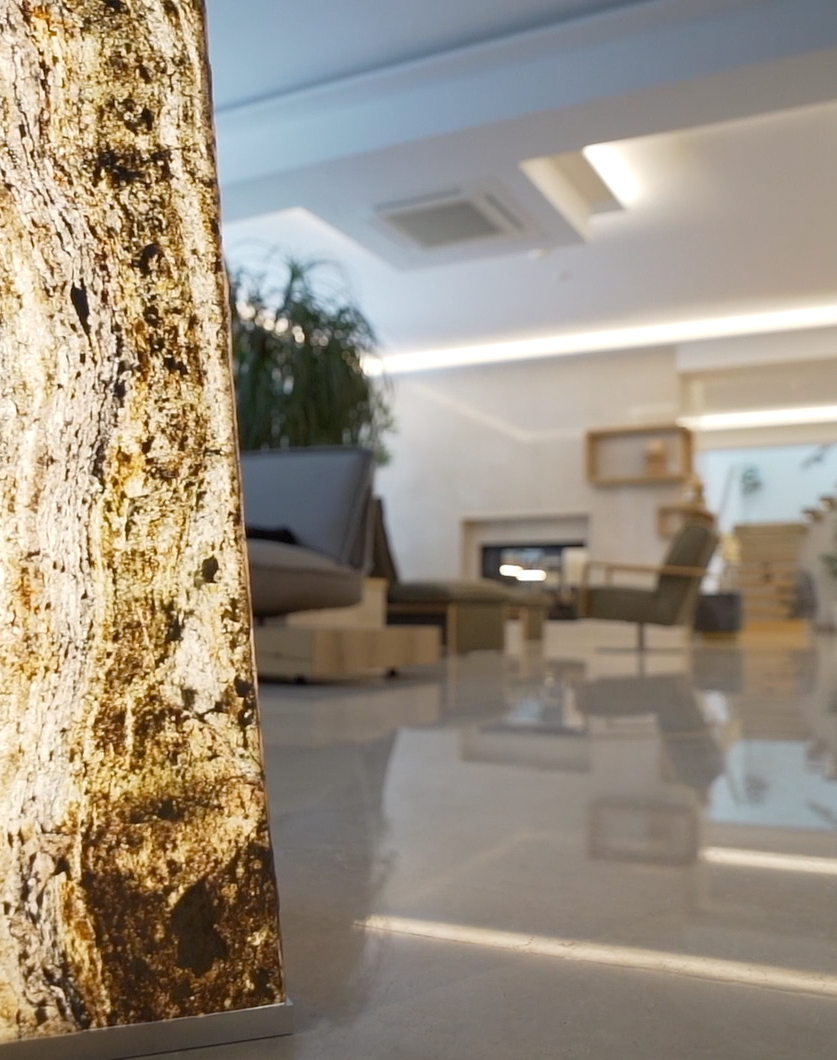Good color rendering for a natural room climate
Rooms appear passive and boring as long as they are empty. If they are not furnished, they lack form, character and vibrancy
With carefully selected and coordinated furnishings, you can transform rooms into either harmonious and cozy oases that invite you to linger. Or into inspiring and creative areas where you can work with ease.
But even with the most beautiful, elegant furniture or design objects, you can't enhance a room if the light is inadequate. Poor color rendering of light sources can bathe all corners of your home in a pale light or distort the surrounding colors with red or blue tints. We therefore recommend that you pay attention to the color rendering index (Ra) when purchasing light sources to avoid a blue miracle.
Color rendering index
What does the Ra value stand for?
The Ra value (Colour Rendering Index = CRI) is a photometric parameter for determining the color impression. Put simply, the Ra value indicates the color rendering of an artificial light source compared to sunlight. This lies between 1 and 100, with sunlight achieving the highest value of Ra 100. Incandescent and halogen lamps usually reached this value before they were withdrawn from the market.
The Ra value is therefore an important quality criterion when evaluating the quality of light and indicates whether artificial light reproduces the surrounding colors naturally, brightly and richly or rather pale, dull and distorted.
Sunlight as a benchmark
The following illustration shows the differences between the various color rendering values. The colors appear optimal in sunlight (right) because our human eye is calibrated for this. Very good results are also achieved with an Ra value of 90 or 95. With the usual Ra value of 80 for inexpensive products, a slight color change is perceptible. Compared to 80, the higher Ra values have a greater proportion of red frequencies in the light spectrum, making the light appear warmer and more natural overall.

Comparison of different light sources
The table below shows the differences between the individual light sources. These are sometimes very large. LED light sources have a value of between 60-100. In the early days, the Ra value here was around 60-70, so the first generations looked very artificial and cold. There are now LED light sources up to Ra100 (FS = full spectrum). However, these are quite expensive to produce.
The EU Regulation No. 1194/2012 regulates the Ra value of at least 80 for private areas. At least Ra65 is prescribed for outdoor and industrial applications.
| Color rendering index | Light source |
| 100 | Sunlight |
| bis 100 | Light bulbs |
| 95-100 | Halogen lamps |
| 60-98 | LED light source |
| 70-89 | Energy saving lamps |
| 60-90 | Fluorescent lamps |
| 45-59 | High-pressure mercury vapor lamps |
| 30-44 | Sodium vapor lamps (high and low pressure) |
The price for a good Ra value
However, the Ra value also has its price with LEDs: the higher it is, the lower the efficiency and therefore the luminous efficacy. The difference between Ra80 and Ra90 is around 20% fewer lumens per watt, with Ra95 it is already 25% and with LEDs with an Ra value close to 100 it is around 30-35%.
It is therefore necessary to weigh up the efficiency against the color rendering index. We recommend using Ra90 for the best compromise between efficiency and color rendering.
Light strips with an energy efficiency class better than D are currently only possible with an Ra80.
Color authenticity for selected colors (R-values)
The following diagram shows the influence of the Ra value on the selected R-values (discrete colors). The R-values are fixed and are also shown in particular for the technical data sheet in accordance with the EU regulation on energy efficiency.
It is clearly visible that the R9 value (red) in particular, but also the R8/R15 values (skin tones) and the R12 value (deep blue) become increasingly worse with a lower Ra value.
The increasing lack of red tones means that the light and colors in the room are perceived as more blue/green. But even the Ra 80 cannot be compared with the initial LED light strips, which only emitted cold and green/blue light. These had an Ra value well below 80. Fortunately, those days are over.








